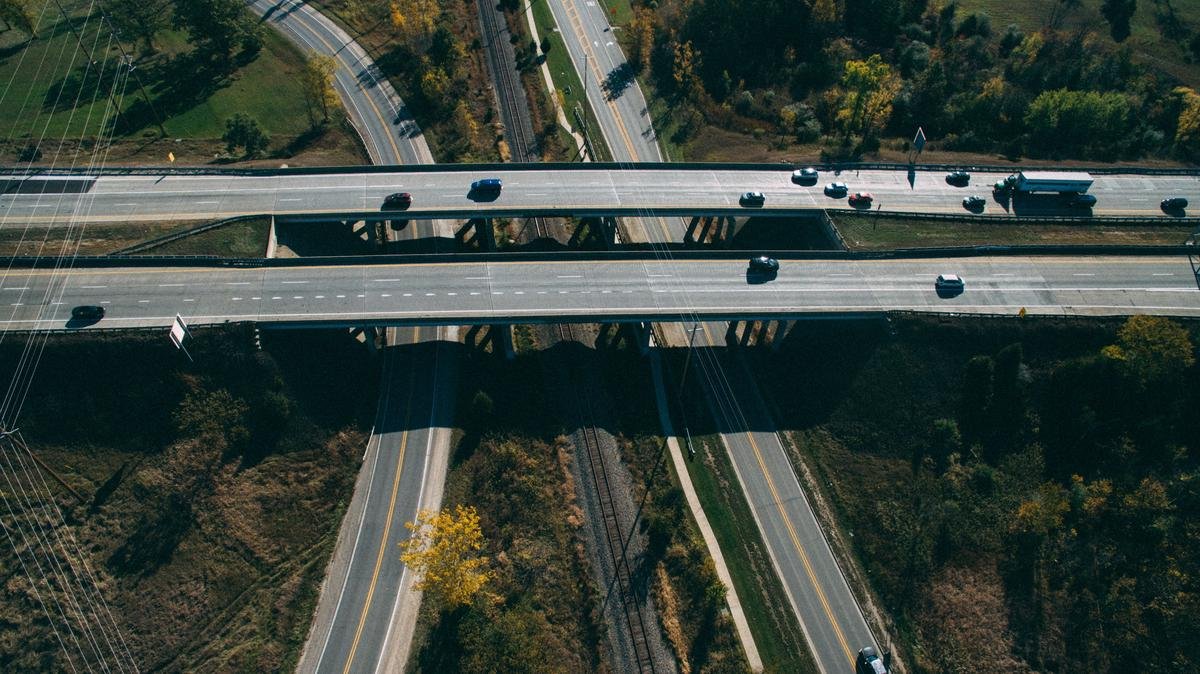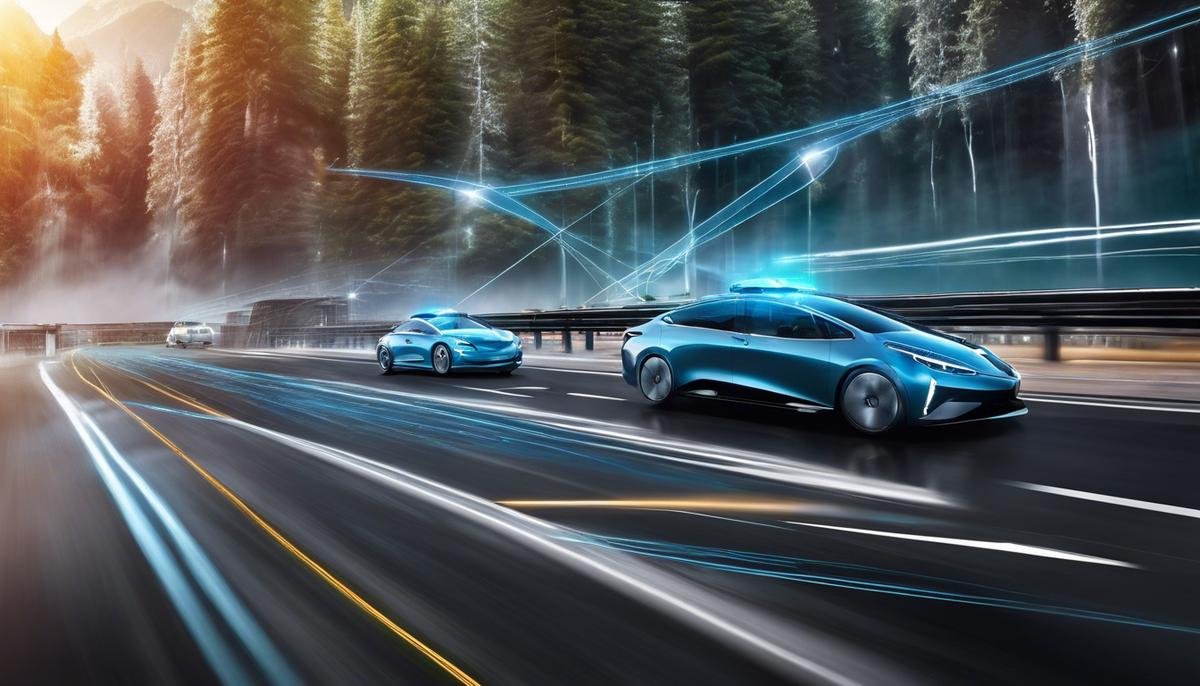The realm of transportation is on the cusp of a technological revolution as self-driving cars emerge from the realm of science fiction into tangible reality. The current state of autonomous vehicle technology reveals a landscape teeming with innovation, where vehicles are increasingly capable of taking the wheel from human hands. Understanding this advanced mimicking of human cognition requires a deep dive into the complex interplay of sensors, algorithms, and machine learning that coalesce to form the nervous system of these vehicles. From the carefully delineated levels of automation defined by the Society of Automotive Engineers to the intricate dance of LiDAR, radar, and computer vision, the journey towards fully autonomous vehicles is both fascinating and fraught with challenges. As we stand on the brink of this transformative era, it is essential to grasp the nuanced components that drive the wheels of progress in this dynamic field.
The Current State of Autonomous Vehicle Technology
Navigating the Nuances of Modern Self-Driving Technology
The landscape of self-driving technology is an ever-evolving frontier, marked by prodigious advancements and meticulous refinement. Today’s leader in this space is the autonomous vehicle, a marvel of engineering that encapsulates decades of research and innovation.
The core of self-driving technology lies in its ability to perceive the environment. Through an intricate network of sensors, cameras, radar, and LIDAR (Light Detection and Ranging), autonomous vehicles actively scan their surroundings with a precision that rivals, and in some instances surpasses, human capability. This sensor fusion creates a detailed, real-time map of the vehicle’s environment, allowing for decisions to be made with a heightened level of accuracy and safety.
Central to the operation of self-driving vehicles is the complex algorithm-driven brain: the onboard computer. This sophisticated system processes vast quantities of data, interprets sensory information, and executes driving actions dynamically. The algorithms are the product of extensive machine learning—a process where the vehicle ‘learns’ from diverse scenarios, continually refining its driving strategy.
Current self-driving technology operates on a spectrum, denoted by levels from 0 to 5, as defined by the Society of Automotive Engineers (SAE). At Level 0, no automation exists; the driver is in complete control. A gradual shift in responsibility from driver to machine occurs up to Level 5, where the vehicle can operate independently under all conditions without human input. While commercially available cars with Levels 2 and 3 are becoming increasingly common, fully autonomous Level 5 vehicles remain largely in the testing and development phase.
Despite strides in technological capabilities, the self-driving industry faces practical challenges. Infrastructure, legislation, and public acceptance are among the pivotal factors that influence deployment. Moreover, ethical considerations surrounding decision-making in unavoidable collision scenarios remain a topic of discerning debate.
Furthermore, the comprehensive training of self-driving systems involves inimitable driving conditions and rare events, which require substantial data collection and scenario modelling. These systems must not only learn driving habits and patterns but should adapt to unforeseen circumstances with the deftness of an experienced human driver.
In conclusion, today’s self-driving technology has achieved a level of sophistication that was unfathomable just a few decades ago. Yet, it is essential to recognize that the road to full autonomy is a complex journey. Continued innovations and enhancements in computation, sensing technologies, and artificial intelligence are pivotal in propelling self-driving vehicles into the realm of everyday reality. The intertwining of technology with the practicality of real-world application signifies a pivotal chapter in the narrative of autonomous vehicular technology—one that is still being written.

Ethical Considerations in Autonomous Vehicle Development
Navigating the Moral Maze: Ethical Challenges in Autonomous Vehicle Development
As we delve into the uncharted territory of autonomous vehicular technology, we enter a labyrinth of ethical conundrums that are as complex as they are critical. The journey thus far has brought to the forefront concerns that demand urgent attention, particularly as we inch closer to integrating self-driving cars into the fabric of everyday life.
One paramount ethical dilemma arises from the principle of safety assurance. The public should be reassured that self-driving cars are indeed safe counterparts to human drivers. This brings into question the reliability of these machines in various traffic conditions and their response to unpredictable scenarios. Are we ready to entrust our lives to a system whose decision-making process, albeit sophisticated, lacks human intuition?
Another imperative ethical consideration is the problem of accountability. In the event of an accident, determining liability becomes a contentious issue. Traditional vehicular accidents often point to the driver at fault, yet in a landscape dominated by autonomous vehicles, culpability could shift to the manufacturer, software programmer, or even the vehicle itself. How the legal system adapts to accommodate such an evolution remains a subject of intense debate.
Moreover, the accessibility and equity implications of self-driving cars introduce yet another ethical dimension. The technology, while promising to revolutionize mobility, risks excluding sectors of the population that might not afford it or cannot interact with it, such as the elderly or those with certain disabilities. This has the potential to create a new mobility divide, aggravating societal inequities.
Furthermore, there is the consequence of data privacy and security. Autonomous cars, equipped to gather vast amounts of data to navigate roads, also have the capacity to collect personal information. The ethical use and protection of this data are paramount to prevent misuse and breaches which could erode public trust in the technology.
Additionally, one must consider the employment implications as self-driving cars become ubiquitous. A significant portion of the workforce engaged in driving-related jobs may find their roles redundant. The ethical mandate to address potential job loss and retrain workers for a shifting economy is not an issue to be taken lightly.
At the heart of these discussions lies the Trolley Problem, reimagined for the age of self-driving cars. This moral thought experiment asks whether an autonomous vehicle should choose the lesser of two evils in an unavoidable crash scenario, like sacrificing the occupant to save a group of pedestrians. Programming a machine to make such moral decisions is not only technically onerous but philosophically daunting.
In conclusion, while the advancing frontiers of self-driving car technology herald a new era of convenience and efficiency, they also present ethically fraught terrain that must be navigated with care. Stakeholders from tech developers to policymakers must engage in proactive and ongoing discourse to address these dilemmas, taking care not to privilege progress over the weighty moral and societal consequences this technology bears. The quest for fully autonomous vehicles is not solely a technical challenge; it is a profound ethical journey.

Photo by chrisbair on Unsplash
Impact of Autonomous Vehicles on Society
As the horizon of self-driving car technology broadens, it becomes essential to discuss the potential influence these vehicles will have on urban planning and the environment. The advent of autonomous cars holds significant promise for altering the landscape of our cities and the broader ecological footprint of transportation.
In the realm of urban planning, self-driving cars offer an opportunity to redesign the very sinews of metropolitan areas. With highly efficient autonomous vehicles capable of communicating with each other to optimize traffic flow, the need for expansive parking lots and garages could decrease, thereby reclaiming precious urban space for parks, housing, or new businesses. This spatial liberation has the further potential to decentralize cities, reducing the strain on central areas and helping to spread economic activity more evenly across the developed terrain.
Furthermore, with precise control and optimization of driving patterns, self-driving vehicles are poised to significantly reduce traffic congestion. This mitigation is not only of comfort but also a question of reducing the substantial emissions linked to idling engines entangled in today’s traffic jams. The potential environmental benefits thus extend to improving air quality and contributing to overarching efforts to constrain the proliferation of greenhouse gases.
The possibility of an augmented shared economy is a fundamental aspect of self-driving cars as catalysts of future lifestyles. The incentive to own a personal vehicle could dwindle as consumers opt for the convenience and cost-effectiveness of on-demand autonomous transportation services. This transition could lead to a paradigm shift regarding how individuals interact with transport on a daily basis, prioritizing utility and service availability over possession and personal ownership.
In terms of economic considerations, autonomous vehicles could engender a redistribution of the workforce. As driving jobs are supplanted by automated systems, there would be an imperative to provide retraining and support for those whose occupations are in flux. Conversely, new industries and job opportunities would undoubtedly arise from the self-driving sector itself, necessitating a workforce skilled in robotics, software development, and system maintenance.
Self-driving cars also promise advances in safety through reductions in traffic accidents primarily caused by human error. By eliminating factors such as distraction, impairment, and fatigue, autonomous vehicles could markedly decrease the number of traffic-related fatalities and injuries. Nevertheless, attaining this level of safety hinges on exhaustive testing and validation, ensuring that these systems can respond appropriately to the unpredictable elements of real-world driving conditions.
As the self-driving domain continues to be characterized by rapid progress and innovation, the amalgamation of regulatory frameworks, technological advancements, and societal adaptability will be indispensable. Optimizing the synchrony between human life and machine learning is a journey that entails meticulous scrutiny and the balanced integration of various interdisciplinary insights and considerations.
Therein lies an inherent call to action for continued robust research, interdisciplinary collaboration, and informed public discourse. The shaping of our collective future through the lens of self-driving technology is a fascinating prospect, one that invites prudent stewardship to harness its realms of possibility effectively and equitably.

Legal and Regulatory Framework for Self-Driving Cars
Navigating the Path of Progress: Autonomous Vehicles and Legal Conundrums
As society stands on the precipice of a transformation in transportation, the emergence of autonomous vehicles poses a myriad of legal challenges that demand meticulous scrutiny. It is incumbent upon policy makers, technologists, and legal experts to unravel the complexities that these vehicles introduce to existing legal frameworks, ensuring their integration contributes positively to the zeitgeist of our era’s mobility.
In the intricate dance of technology and law, one pivotal issue is the redefinition of driver responsibility. The quintessential question emerges: when an autonomous vehicle is involved in a vehicular mishap, who bears the onus? The shift from driver to system-oriented accountability necessitates a re-examination of traffic laws and introduces the need for statutes that address the nuances of artificial intelligence in control.
Moreover, the harmonization of insurance models with the advent of driverless technology is intricate. Traditional insurance policies are predicated on human error, but with autonomy, the focus transitions to software malfunctions and hardware failures. Therefore, insurers must recalibrate their risk assessment models and develop coverage schemes that reflect these new variables.
Additionally, the codification of traffic regulations must evolve. Presently, traffic laws are designed with human capacities and limitations in mind. Autonomous vehicles, operating with precise consistency and unwavering attention, may redefine these regulations, calling for updates that accommodate their unique operational capabilities.
Furthermore, the ingress of autonomous vehicles will likely precipitate changes in infrastructure investment and urban planning. Jurisdictions will need to assess the prioritization of resources, determining the necessity of retrofitting current roads and urban landscapes to cater to a new generation of vehicles.
The preservation of individual privacy stands as a legal bastion against the potential overreach of surveillance associated with autonomous vehicles. Vehicles equipped with an abundance of sensors generate vast quantities of data that could be exploited. It is imperative to erect robust safeguards to protect personal information from misuse.
Lastly, intellectual property rights acquire a new dimension in the context of autonomous vehicle software. As innovations drive forward, the protection and licensing of proprietary technology and software become critical issues that intertwine with the fabric of autonomy, requiring vigilant legal oversight to maintain a balance between innovation and legal rights.
In summation, autonomous vehicles offer a groundbreaking shift towards a future with potentials for increased safety and efficiency. Yet, their integration is an intricate tapestry that entails the fine-tuning of multiple legal gears. The legal framework must mature in step with technology, ensuring that as we advance, we do so with consideration, precision, and a firm grasp on the underpinnings of justice that form the bedrock of our legal systems. The road ahead is one of collaborative effort, visionary policy-making, and unswerving dedication to crafting a future where technology serves humanity, not only in function but within the bounds of law.

Safety and Security of Autonomous Vehicles
Understanding the Safety and Security of Autonomous Vehicles: A Critical Analysis
As the horizon for autonomous vehicle technology draws near, one pivotal question remains paramount: how safe and secure are these self-operating entities that are poised to revolutionize our transportation systems? This inquiry deserves attention as the vehicles themselves demand impeccably reliable mechanisms to ensure the safety of passengers and pedestrians alike, as well as securing the ever-important personal and operational data.
A foundational concern relating to safety is how effectively these vehicles can communicate with one another and with the infrastructure around them. Vehicle-to-vehicle (V2V) and vehicle-to-infrastructure (V2I) communications are crucial for orchestrating harmonious movement on the roads, and any disruption or interference in these signals could result in perilous situations. These communications systems must be robust against malfunctions and safeguarded against cyber threats that could jeopardize the veracity of the transmitted information.
Cybersecurity is a multilayered challenge for autonomous vehicles. With an interconnected network, there remains the specter of cyber attacks that could potentially take control of a vehicle, manipulate its navigation, or compromise sensitive user data. Meticulous encryption protocols and stringent cybersecurity measures must be tirelessly updated and enforced to combat the ever-evolving landscape of cyber threats.
Another vital aspect of security is in the physical realm. Although immense strides have been made in obstacle detection and collision avoidance, ensuring that these systems remain operational in diverse environmental conditions is essential. Factors such as severe weather, unusual road layouts, and unexpected behavior from other road users pose risks that must be mitigated through continuous improvement of sensor technology and machine learning algorithms. The capacity of these systems to quickly and accurately respond to anomalous events is a direct contributor to the safety of autonomous vehicles.
In the context of reliability, redundancy systems play a critical role. Autonomous vehicles must be equipped with fail-safes that allow for a seamless handover to backup systems in the event of a primary system failure. This ensures that control is maintained or gracefully transferred to a safe mode, should any component not perform as intended. The installation of such redundant systems is instrumental in building trust in the technology’s reliability.
Further considerations arise when examining the practical implications of introducing autonomous vehicles onto public roads. A distinct framework integrating these vehicles into the current traffic system must evolve. This includes updating road signs, lane markings, and traffic lights to be machine-readable, ensuring a mutual understanding between human drivers and autonomous vehicles to avoid any miscommunication and consequent accidents.
Continuously addressing these security and safety challenges is no mere academic exercise but a necessity as we draw closer to an impending reality where autonomous vehicles become commonplace. It is through meticulous scrutiny, rigorous testing, unwavering dedication to improvement, and collaboration across disciplines that we can inch towards the assured security and safety of these self-driving marvels, thus enabling a future wherein the full benefits of autonomous vehicles might be realized without compromise.

As the horizon of autonomous vehicles widens, society is poised at a significant inflection point in the history of transportation. The integration of these self-directed machines on our roads crystallizes a future where ethical considerations, societal impacts, legal structures, and safety measures are recast through the lens of innovation. With the momentum of technology’s march, the ripples extend far beyond the vehicles themselves, influencing the very fabric of our daily lives, from the way we commute to the design of our cities. The journey ahead promises to be as intricate as it is extraordinary, reshaping notions of mobility and autonomy in a world increasingly navigated by the digital mind of a car.



